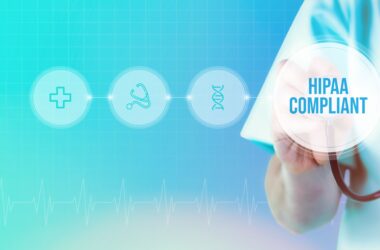Healthcare has long been a large target for cybercriminals, and the need for robust compliance monitoring has never been more crucial. With hackers responsible for 75% of the over 50.4 million patient records impacted by data breaches in 2021, the healthcare sector is grappling with significant risks. Hacking incidents have climbed for the sixth consecutive year, with a 20% increase in breaches year-over-year in 2021. The shift towards virtual care delivery and remote work has further exposed vulnerabilities in sensitive patient data. Modernizing healthcare compliance monitoring is essential to mitigate these risks and safeguard patient information effectively.
This blog covers the essential factors that we should know to clearly understand the breaches and their impact on the industry and patients.
Trigger Factors For Healthcare Data Breaches
The growing frequency of data breaches in healthcare can be attributed to several factors. A few of the important ones are outlined below:
- Outdated Legacy Systems: Many healthcare organizations still rely on legacy systems that are either ill-equipped or outdated to handle modern cybersecurity threats. These systems often lack the necessary security updates and are vulnerable to attacks.
- Insufficient Compliance Monitoring: Traditional compliance monitoring methods fail to keep pace with the transforming landscape of cyber threats. Without proactive monitoring, organizations struggle to identify and mitigate risks in real-time.
- Inadequate Staff Training: Human error remains a significant factor in data breaches. Employees often lack proper training on cybersecurity best practices, making them susceptible to phishing attacks and other social engineering tactics.
- Rise Of Remote Work & Virtual Care: The pandemic has sped up the adoption of remote work and virtual care, expanding the attack surface for cybercriminals. Unsecured home networks and personal devices used for professional purposes increase the likelihood of data breaches.
Why Traditional Methods No Longer Work?
Traditional methods of protecting healthcare data, like firewalls and antivirus software, were once the backbone of cybersecurity. However, these approaches have become insufficient in today’s rapidly evolving digital landscape. Historically, these legacy solutions are designed to respond to threats after they have already entered the system rather than blocking them in the first place. This reactive nature leaves healthcare organizations vulnerable, as the window between the detection of a breach and the response is often too long to prevent significant damage.
Additionally, legacy systems in healthcare are often deeply entrenched, with many organizations relying on outdated software and hardware that cannot be easily upgraded or replaced. These systems were not designed with modern cybersecurity threats in mind and lacked the agility to adapt to the dynamic threat landscape.
Cybercriminals are leveraging more sophisticated and targeted tactics to exploit the healthcare sector’s reliance on legacy systems and outdated security practices. As these threats become more advanced, relying solely on basic defense mechanisms does not offer the necessary protection.
To seamlessly tackle the rising tide of cyber threats, healthcare organizations must adopt a more dynamic and comprehensive approach to compliance monitoring. This involves moving beyond traditional security measures to implement a multi-layered defense strategy that includes real-time monitoring, predictive analytics, and automated threat response.
With modern compliance monitoring solutions, healthcare organizations can get real-time visibility into security posture and compliance status. These solutions can integrate with existing IT infrastructure, enhancing security without disrupting operations.
By continuously monitoring for compliance with regulatory standards, organizations can stay aligned with the latest cybersecurity guidelines and best practices, reducing the risk of data breaches and enhancing patient trust.
The Future Of Healthcare Compliance Monitoring
The future of healthcare compliance monitoring lies in adopting advanced technologies and proactive strategies to outpace cybercriminals. A few of the important strategies include:
- Implementation Of AI and ML: By leveraging artificial intelligence and machine learning, healthcare organizations can predict potential threats and automate responses. These technologies can examine large volumes of data in real-time, recognizing patterns that may indicate a security risk.
- Legacy Modernization: Upgrading or replacing outdated legacy systems is crucial for enhancing cybersecurity resilience. Modernized systems come with advanced security features and can integrate seamlessly with other digital tools, providing a more robust defense against breaches.
- Continuous Monitoring And Real-Time Alerts: Continuous compliance monitoring enables organizations to spot and respond to threats immediately. Real-time alerts enable quick action, reducing the impact of potential breaches and protecting patient data more effectively.
- Comprehensive Staff Training: Educating healthcare staff on cybersecurity best practices is a key component of a proactive compliance strategy. Regular training ensures that employees are equipped to recognize and respond to threats, minimizing the risk of breaches due to human error.
- Regulatory Alignment And Standards: Adhering to regulatory standards, such as the HIPAA, is essential in maintaining compliance and protecting patient data. Continuous updates to these standards reflect the evolving threat landscape, guiding healthcare organizations in their cybersecurity efforts.
Final Words
The rise in cyberattacks against the healthcare sector underscores the urgent need for a modernized approach to compliance monitoring. As cybercriminals continue to exploit the vulnerabilities of legacy systems, healthcare organizations must pivot towards more advanced, proactive measures to safeguard patient data. By embracing legacy modernization, leveraging AI and machine learning, and investing in comprehensive staff training, the healthcare industry can transform compliance monitoring into a formidable risk change agent against the ever-evolving threats posed by cybercriminals.
[You Might Also Like To Read: Emerging Compliance Challenges For Healthcare Providers]











